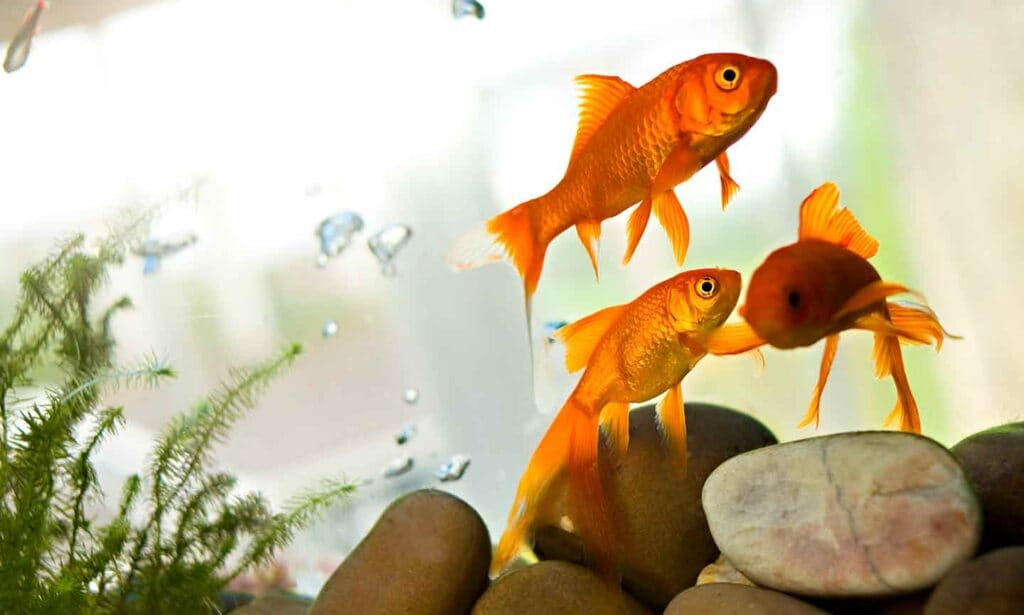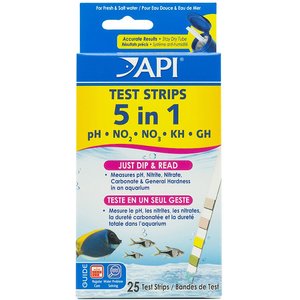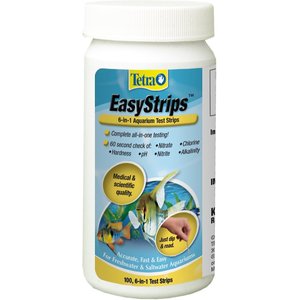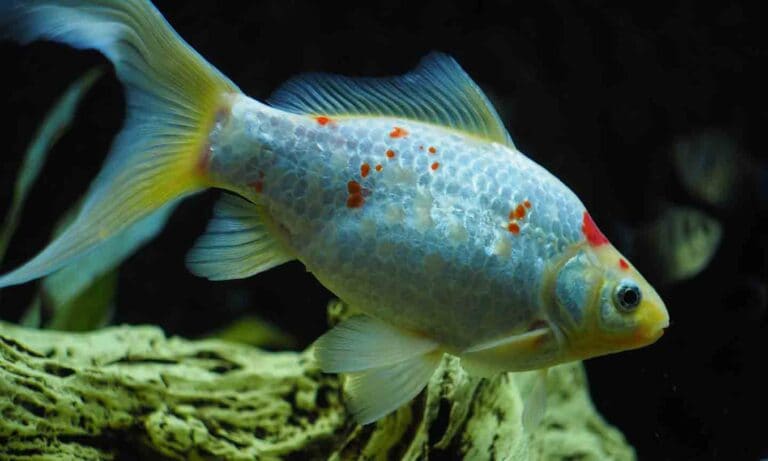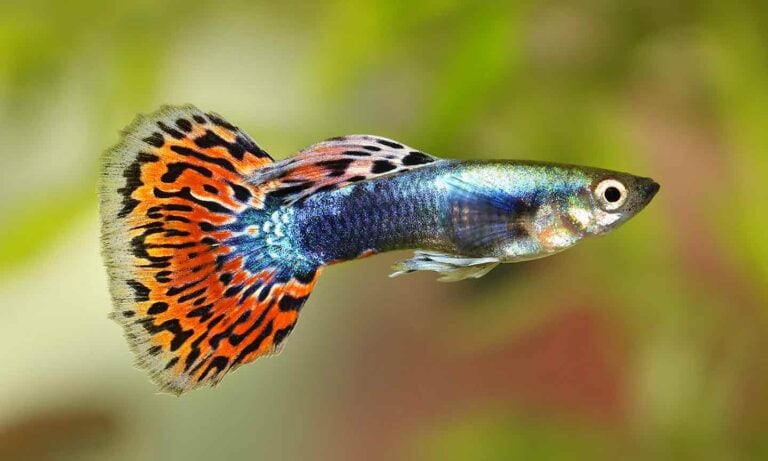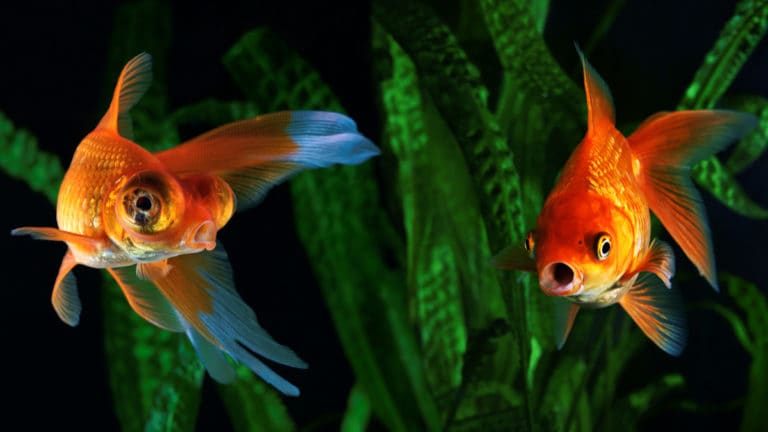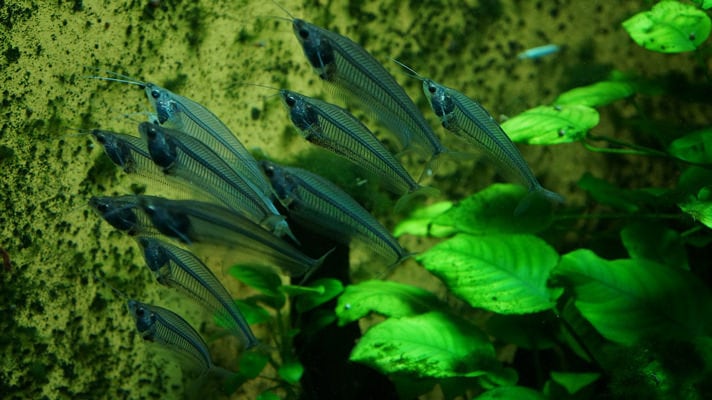When you catch a case of the sniffles and start to feel run down, you know it’s time to book an appointment with your doctor. You know your body well enough to be able to tell when something is off, but identifying the signs of illness in pets can be tricky—especially aquarium fish. Many fish diseases present subtly but, without prompt treatment, they can worsen and may even become fatal. Proper diagnosis is key if you want your fish to make a full recovery.
For aquarium fish living in a captive environment, every detail matters. Something as seemingly minor as a drop in temperature can stress your fish and make them more susceptible to illness.
In this guide, we’ll explore the most common aquarium fish diseases to determine how to identify and treat them.
20 Common Fish Diseases
1Ammonia Poisoning
Though technically not a disease, ammonia poisoning is incredibly common in new fish tanks. Ammonia is a byproduct of the process of organic material breaking down and it can be incredibly toxic for fish. Nitrifying bacteria convert ammonia into nitrite and then into nitrate, which is less harmful.
Symptoms:
- Labored breathing
- Gasping at the surface
- Loss of appetite
- Lethargy
- Red streaks on the body
- Red or inflamed gills
- Lying at the bottom of the tank
How To Treat Ammonia Poisoning
Prevention is the best option. Make sure any new tank has gone through the nitrogen cycle and has a fully established colony of beneficial bacteria before adding fish. Ammonia spikes can be managed with frequent water changes. It may also help to siphon your substrate during water changes to remove accumulated organic matter.
Find out more about controlling ammonia in your aquarium.
2Anchor Worms
Not actually a worm but rather a parasitic crustacean, anchor worms are most commonly seen in pond fish but can infect aquarium fish as well. These parasites embed themselves in the muscle, sometimes burrowing into the internal organs. A raised ulcer typically forms at the point of attachment and may provide an opportunity for secondary infections to set in.
Symptoms:
- Red, inflamed skin
- Visible worms
- Ulcers
- Rubbing or brushing against tank objects
How To Treat Anchor Worms
Anchor worms are usually only seen in outdoor koi ponds and newly imported tropical fish. Quarantine is essential for all new fish and any that have been infected with anchor worms. Remove adult worms by hand using forceps and treat the wound with fish-safe antiseptic. Continue removing them weekly until no more adult worms develop.
Find out more about other fish parasites.
3Bacterial Infection (Aeromonas)
Bacterial infections commonly occur as secondary infections after a fish has sustained an injury. Fish that are stressed by poor water quality may be more susceptible to these infections as well. One of the most common bacteria to affect fish is Aeromonas salmonicida. These bacteria can affect multiple systems in an infected fish’s body.
Symptoms:
- Swollen eyes
- Fluid accumulation in the abdomen
- Dropsy (abnormal fluid retention) due to kidney damage
- Ragged fins
- Hemorrhagic lesions
- Skin and gill ulcers
How To Treat Bacterial Infections
Antibacterial medications are generally the best treatment for bacterial infections. Dr. G, DVM, owner of Aquaveterinarian in South Florida, notes that many antibacterial formulations are less effective in water and are best administered by injection or in food.
4Brooklynellosis (Anemonefish Disease)
Caused by a ciliated protozoa called Brooklynella hostilis, this disease most commonly affects anemonefish but will infect others as well. It usually develops when the fish are extremely stressed, such as when they are overcrowded in retail stores or shipped.
Symptoms:
- Sloughing of the epithelium
- Increased mucus secretions
- Lethargy
- Respiratory distress
- Loss of appetite
- Discolored skin
How To Treat Brooklynellosis
The most common treatment for this disease is a combination of formalin and malachite green. Malachite green can be dosed at a concentration of 0.10 ppm for 7 to 10 days. Formalin is best administered as a bath with 0.5 mL of formalin per gallon of water. Take care when using formalin on fish with severe skin damage, as they may be more sensitive.
Find out more about marine fish diseases.
5Columnaris (Mouth Fungus)
Also known as cotton mouth or mouth fungus, this disease is caused by Columnaris bacteria. They appear as white or gray spots on the head, fin and gills, which progress into cottony growths.
Symptoms:
- Cottony growths
- Raised skin patches
- Pale gills
- Lethargy
- Loss of appetite
- Difficulty swimming
How To Treat Columnaris
This bacterial infection is best treated with injectable antibiotics. According to a 2013 study, external treatment with antimicrobial agents may be effective but only in the early stages of the disease.
Find out more about columnaris.
6Dropsy
Also known as edema, dropsy is a symptom of disease characterized by swelling in the abdomen. Fish with dropsy are sometimes said to be “pineconing,” which refers to a bristly appearance they take on when swelling causes their scales to protrude.
Symptoms:
- Swollen abdomen
- Protruding scales
How To Treat Dropsy
Opportunistic bacterial infections are a common cause of dropsy and can be treated with antibacterial medications. Metronidazole may be effective for protozoan infections, but viral causes of dropsy can be very difficult to treat.
Find out more about dropsy.
7Fin Rot
Fin rot is characterized by the rotting or fraying of a fish’s fins and/or tail. You may also notice swelling at the base of the fin, and in severe cases, the fin or tail may deteriorate completely.
Symptoms:
- Changing color of fins or tail
- Frayed edges
- Inflammation at the base
- Deterioration of fins and/or tail
How To Treat Fin Rot
Fin rot is often the result of poor water quality but can be exacerbated by fin nipping or bullying behaviors by other fish. Improving tank conditions is a must. In some cases, bacterial infection is involved, in which case antibiotic treatment may be warranted.
Find out more about aquarium fish fungus.
8Flukes
Microscopic parasites found in a fish’s gills or skin, flukes are generally caused by Gyrodactylus (skin flukes) or Dactylogyrus (gill flukes). Although flukes are too small to see with the naked eye, you can detect them by the irritation they cause.
Symptoms:
- Skin irritation
- Missing scales
- Red spots
- Increased mucus production
- Flashing
- Lethargy
- Loss of appetite
How To Treat Flukes
Poor water quality, overcrowding and improper diet are key contributors to flukes in fish. Treatment depends on the type of parasite, so proper identification is essential. Formalin is a common treatment but should be used with caution. It removes dissolved oxygen from the water and, in high doses, could cause toxicity.
Find out more about gill and skin flukes.
9Gold Dust Disease (Velvet)
Caused by a protozoan parasite that attacks the skin and gills, velvet is also called gold dust disease due to its dusty yellow appearance on the skin. Velvet is caused by different parasites in freshwater and marine fish, with freshwater velvet being caused by Piscinoodinium (or simply Oodinium) and marine velvet being caused by Amyloodinium parasites.
Symptoms:
- Dusty yellow appearance
- Tiny spots on the fins and body
- Flashing against surfaces
- Loss of appetite
- Lethargy
How To Treat Velvet
Veterinarians typically recommend chloroquine for treating velvet in aquarium fish. Be sure to follow the instructions carefully and check for the return of symptoms after 7 to 10 days.
Find out more about freshwater velvet here.
10Hexamitiasis
Another protozoan parasite, Hexamita, most commonly affects cichlids, gourami and betta fish. They attack the intestines of fish that are already stressed by crowded conditions, poor water quality or shipping, causing weight loss and, in serious cases, death.
Symptoms:
- Weight loss
- Loss of appetite
- White, stringy feces
- Death
How To Treat Hexamita
Prompt treatment of hexamita infestation is essential to prevent serious weight loss and death. If the fish is still eating, the best treatment is metronidazole in food. If the fish has stopped eating, add the medication to the water at a dosage of 250 mg per 10 gallons.
Find out more about hexamita.
11“Hole in the Head”
“Hole in the head” is a disease closely linked to hexamitiasis. Commonly seen in perciform fish like cichlids and carp, the Hexamita parasite infection can transition from intestinal to systemic. When the parasites migrate to the sensory pores in the fish’s head, it causes the surrounding tissue to decay and deep lesions to form.
Symptoms:
- Pale-colored feces
- Lesions on the head
- Tissue decay
How To Treat “Hole in the Head”
Maintaining high water quality is essential for preventing “hole in the head.” Once it develops, however, it should be treated with metronidazole-medicated food. In serious cases where the fish have stopped eating, the medication can be added to the water.
Find out more about hexamita and hole in the head here.
12Ich (White Spot Disease)
One of the most contagious freshwater fish diseases, ich or white spot disease, is caused by the protozoan parasite Ichthyophthirius multifiliis. It attaches to the fish’s body, fins and gills, forming tiny cysts. After feeding, it falls off and replicates in the tank.
Symptoms:
- Tiny white spots
- Dusty appearance of skin
- Loss of appetite
- Lethargy
- Labored breathing
- Hiding behavior
How To Treat Ich
Ich is most likely to affect fish that are already stressed or sick. Quarantining sick fish is essential, and raising the temperature in the hospital tank can help speed up the life cycle of the parasite to resolve the infestation more quickly. Recommended treatments include copper sulfate and malachite green. Potassium permanganate may also be effective.
Find out more about white spot disease.
13Lymphocystis
Caused by a viral infection, lymphocystis presents as raspberry-like growths. Like many infections, it commonly develops when water quality is poor, but it can also be genetically inherited or transmitted through contact with infected fish.
Symptoms:
- Raspberry-like growths
- Popeye
How To Treat Lymphocystis
As a viral infection, there is no effective cure for lymphocystis. If the tumors grow large enough to impact the fish’s ability to eat or swim, surgical removal may be necessary. In many cases, the disease clears up on its own within a matter of weeks.
14Marine White Spot Disease
Though similar in appearance to freshwater ich, marine white spot disease or marine ich is caused by a different parasite—Cryptocaryon irritans, a ciliated protozoan with a three-stage life cycle.
Symptoms:
- White spots on the body and fins
- Dusty appearance
- Labored breathing
- Faded color
- Flashing against substrate
How To Treat Marine Ich
Immediate quarantine is essential for affected fish. Frequent water changes can help reduce the number of parasites in the hospital tank, while formalin or copper-based medications can assist in killing parasites on the fish. As an alternative, some experts recommend lowering the salinity in the hospital tank to 14-16 ppt to stop the parasite’s life cycle.
15Parasite Infestation
Parasite infestations are frequent in fish undergoing stress. They’re particularly common in fisheries, wholesale facilities and retail stores where fish aren’t kept in ideal conditions. Examples of parasites not covered elsewhere on this list may include roundworm, epistylis and flatworms.
Symptoms:
- Visible dots or threads
- Inflamed gills
- Labored breathing
- Flashing
How To Treat Parasites
Manual removal is recommended for larger parasites like anchor worms but may be difficult for smaller infestations like epistylis. Quarantining sick fish is essential to prevent the spread. In some cases, formalin or praziquantel treatments may be effective.
16Popeye
As the name suggests, popeye is characterized by the swelling of one or both eyes. It’s caused by the buildup of fluid behind the eye but is often a result of an opportunistic bacterial infection brought on by stress or poor tank conditions.
Symptoms:
- Swollen eye
- Cloudy eye
How To Treat Popeye
Popeye is much easier to prevent than to treat. Swelling may reduce over time if tank conditions improve, and even minor corneal damage may heal. Dr. G suggests that treating a hospital tank with aquarium salt may also be beneficial.
Find out more about popeye in fish here.
17Slime Disease
The term “slime disease” generally refers to various parasitic infections that cause the overproduction of mucus in fish. Fish with slime disease may have cloudy patches of skin and exhibit labored breathing, erratic behavior and clamped fins.
Symptoms:
- Patchy skin
- Increased mucus production
- Labored breathing
- Flashing against objects
- Clamped fins
- Lethargy
How To Treat Slime Disease
Reducing stress is an important element in treating any parasitic infection, especially because the risk of secondary infections is high. Formalin, copper sulfate and potassium permanganate are the most common treatments.
Find out more about aquarium slime disease.
18Swim Bladder Disease
The swim bladder is a gas-filled organ that helps fish maintain their buoyancy. Swim bladder disease is less a disease than a dysfunction of this essential organ. It can be a side effect of constipation, liver or kidney problems, or underlying fungal or bacterial infections. It is particularly common in fish, such as fancy goldfish, that have a globoid (rounded or spherical) body shape.
Symptoms:
- Difficulty swimming
- Lying at the bottom of the tank
- Floating at the surface
How To Treat Swim Bladder Disease
Proper treatment depends on the underlying cause. For constipation, withhold food for up to 48 hours and offer skinned frozen peas (thawed) as a natural laxative. In some cases, treating with aquarium salt may also help.
Find out more about identifying and treating swim bladder disease.
19Ulcers
Common in coldwater fish, such as carp, ulcers are sores that result from inflammation of the external tissues. They can be caused by factors ranging from physical injury to bacterial infection. Other factors that may contribute to the development of ulcers include parasites, poor water quality, high ammonia levels, or low pH.
Symptoms:
- Skin inflammation
- Red sores
- Protruding scales
- Skin erosion
How To Treat Ulcers
Treatment of ulcers also depends on the cause of the issue. Start with a 30- to 50-percent water change and quarantine the affected fish. For bacterial causes, antibiotic treatment may be necessary. In other cases, aquarium salt may help.
20Hemorrhagic Septicemia
Sometimes shortened to VHS, viral hemorrhagic septicemia is a viral infection first discovered in the US in the Great Lakes region in the early 2000s. The more common form of hemorrhagic septicemia seen in aquarium fish is caused by bacteria.
Symptoms:
- Hemorrhaging (bleeding)
- Bulging eyes
- Anemia
- Bloating in the abdomen
- Unusual behavior
How To Treat Hemorrhagic Septicemia
Bacterial treatments are the best option for hemorrhagic septicemia and should be administered by injection or in medicated food. Experts caution against over-the-counter antibiotics, as they are much less effective.
How To Keep Your Aquarium Fish Healthy
Being able to identify aquarium fish diseases is essential. Equally important, however, is maintaining your tank with the ideal conditions to keep your fish from getting sick in the first place. While your tank parameters should be catered to your specific fish, there are a few simple steps any aquarium hobbyist can take to keep a freshwater or saltwater aquarium healthy.
Maintain High Water Quality
Dr. Mollie Newton, DVM, in Columbus, Ohio, says “It’s crucial to maintain excellent water quality through regular testing and water changes” to keep your fish healthy. Monitor ammonia, nitrite and nitrate levels with an aquarium water test kit and perform water changes as needed to keep the water quality high.
Cycle Your Tank Before Adding Fish
It takes time for a sufficient colony of beneficial bacteria to become established in an aquarium, so be patient. While some aquarium experts advocate for cycling a tank using hardy fish like danios, many prefer fishless cycling. You can speed up the cycling of your tank by adding live nitrifying bacteria or by “feeding” the tank with ammonia.
Keep Up With Routine Maintenance
While water changes are essential for maintaining ideal tank conditions, Dr. G cautions against performing water changes of over 50 percent of your tank volume. Small weekly water changes are better than large monthly changes. He says not to change your filter media on the same day as a water change to avoid killing off too many beneficial bacteria.
Feed Your Fish an Appropriate Diet
According to the Merck Veterinary Manual, lack of proper nutrition is one of the most common contributors to aquarium fish diseases. Choose an appropriate food for the species of fish you keep and feed them modestly. Excess food will just decompose and interfere with the water chemistry in your tank, stressing your fish.
Avoid Overstocking Your Tank
Overcrowding is a common cause of stress in aquarium fish. To reduce stress, Dr. Newton says aquarists should “create a peaceful tank environment and acclimate new fish slowly.” When stocking your tank, plan for the mature size of your fish—aquarium fish are often sold as juveniles and can be expected to grow.
Taking the time to carefully select your equipment and letting your tank fully cycle before you add fish increases your chances of success as an aquarium hobbyist. An aquarium isn’t just a “set it and forget it” kind of thing, however. You’ll need to perform maintenance from time to time to keep the water quality in your tank high.
Check out this guide on how to clean a fish tank to learn more.
Expert advice provided by: Dr. G, DVM, owner of Aquaveterinarian in South Florida; and Dr. Mollie Newton, DVM, in Columbus, Ohio.
More Fish Tips
Share:
